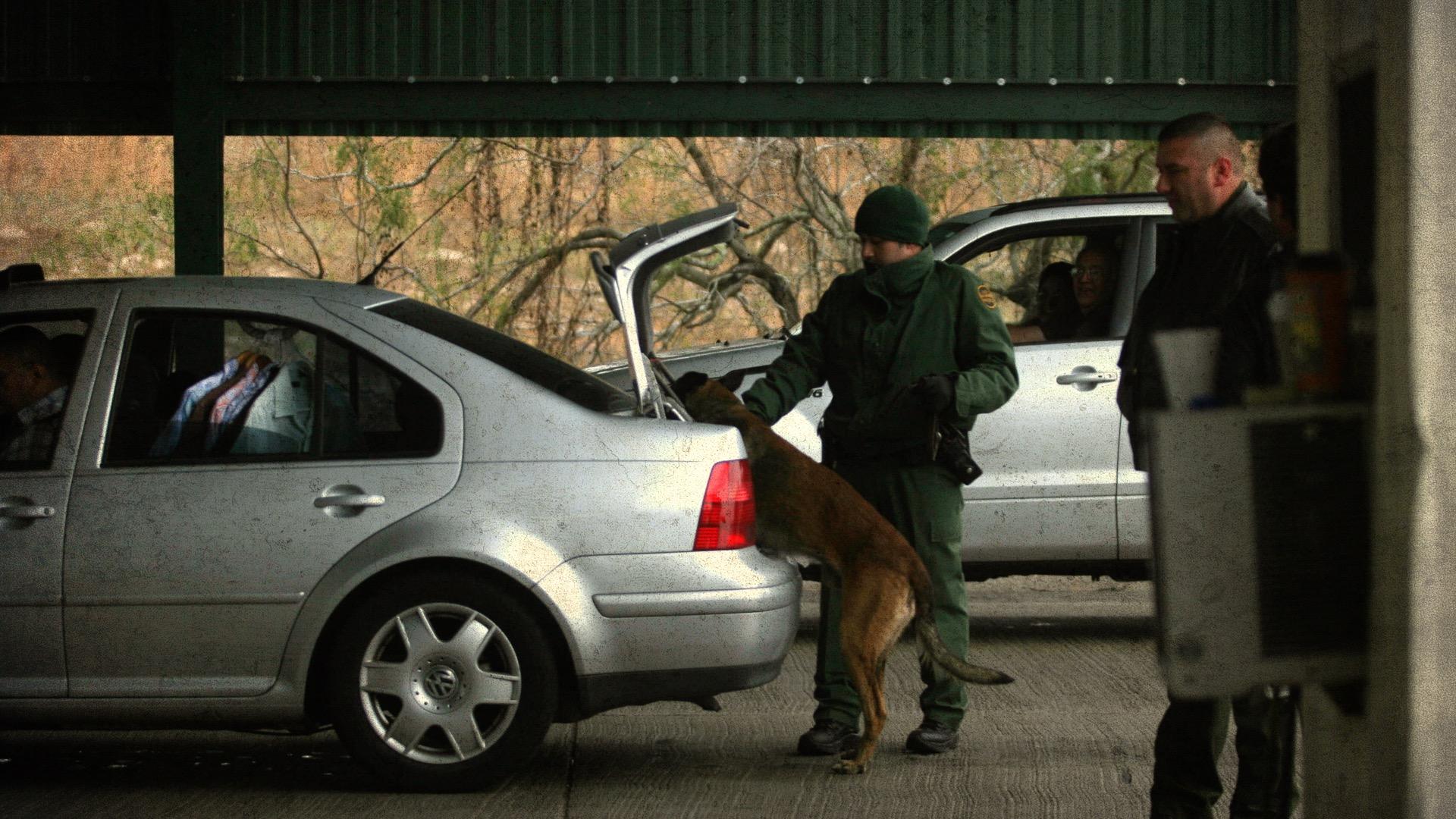Migrant caravan: Eight cross the US-Mexico border
- Published
Caravan migrants cross US border
Eight women and children travelling in a controversial caravan to seek asylum in the US have been allowed to cross the border.
Some 150 Central American migrants arrived at the San Ysidro border crossing near San Diego on Sunday but were told the crossing was full.
Eleven others believed to be members of the group have been charged with entering the US illegally.
President Donald Trump says the caravan is a threat to the safety of the US.
The caravan started its journey from southern Mexico on 25 March, at one point numbering more than 1,000 people.
The group travelled 2,000 miles (3,200km) by bus, train and on foot during its trek to the US border, with many saying they were fleeing persecution and violence in their home countries.
The US has a legal obligation to hear asylum claims although the majority of claimants from Central America lose their cases.
The caravan has been a frequent target for the US president, who has argued in his tweets that it showed the need to tighten immigration laws.
Allow X content?
This article contains content provided by X. We ask for your permission before anything is loaded, as they may be using cookies and other technologies. You may want to read X’s cookie policy, external and privacy policy, external before accepting. To view this content choose ‘accept and continue’.
He has asked states bordering Mexico to send troops to shore up security until his proposed border wall is built.
Migrants' route

What happened at the crossing?
Eight people were allowed to cross into the US 24 hours after arriving in the Mexican border city of Tijuana, according to Pueblo Sin Fronteras, the campaign group that organised the caravan.
Other members of the group remain camped near the crossing.
On Monday night, US Attorney General Jeff Sessions ordered that criminal charges be filed against 11 migrants - said to be members of the caravan - who were detained for illegally crossing into the US.
Earlier on Monday, US Customs and Border Patrol Commissioner Kevin McAleenan said in a statement that "we have reached capacity at the San Ysidro port of entry".
"Those individuals may need to wait in Mexico as CBP officers work to process those already within our facilities."
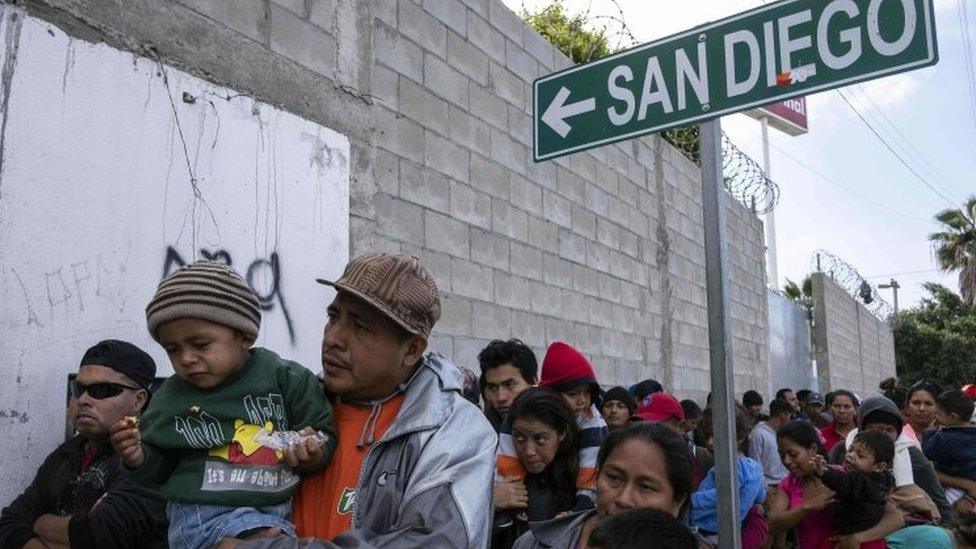
The migrants began their gruelling trek north in southern Mexico on 25 March
A lawyer for the group was aghast that inspectors at the border were not ready for them, external.
"We can build a base in Iraq in under a week. We can't process 200 refugees. I don't believe it," Nicole Ramos told the Associated Press news agency.
What happens next?
Under US immigration law, inspectors have the power to quickly deport individuals who do not have the proper travel or visa documents at the time that they request entry or if the inspector believes that the person requesting entry has committed fraud or misrepresented the truth.
However, if an individual expresses a fear of return to his or her home country, they will not be immediately deported but instead be detained until they undergo a "credible fear interview".
The migrant caravan Trump keeps referencing
The aim of the interview is for the asylum officer to try to establish if the asylum request is based on a fear of persecution based on race, religion, nationality, political beliefs or membership of a particular group.
If the officer finds that the individual has a chance of proving fear of persecution, the applicant is referred to a judge.
Ms Ramos said the caravan organisers were only sending people who they thought would pass the credible-fear interviews.
When is Trump going to build his wall?
Constructing a "big, beautiful wall" along the Mexican border was a signature campaign promise for Mr Trump, but so far the plan to erect a new physical barrier has been thwarted by lawmakers and appears to have stalled.
Trump: 'We will be guarding our wall with military'
A major government spending bill which he signed last month included $1.2bn for the border wall - far short of the $25bn the White House sought.
And there were strings attached to the funding Congress did approve. Most of it can only be used to repair stretches of the border where there already is a wall, not to build new segments.


More on Trump and immigration
The missing - consequences of Trump's immigration crackdown
- Published7 April 2018

- Published3 April 2018
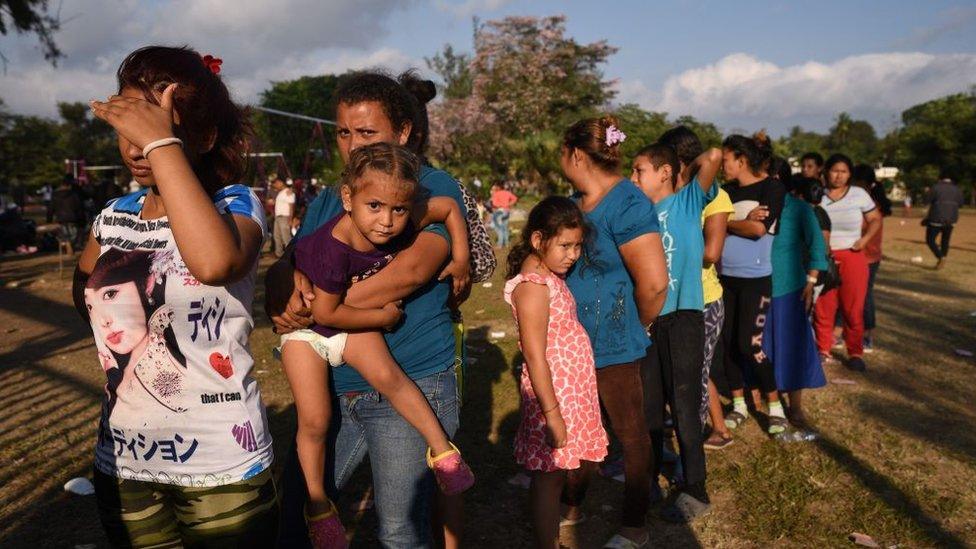
- Published3 April 2018
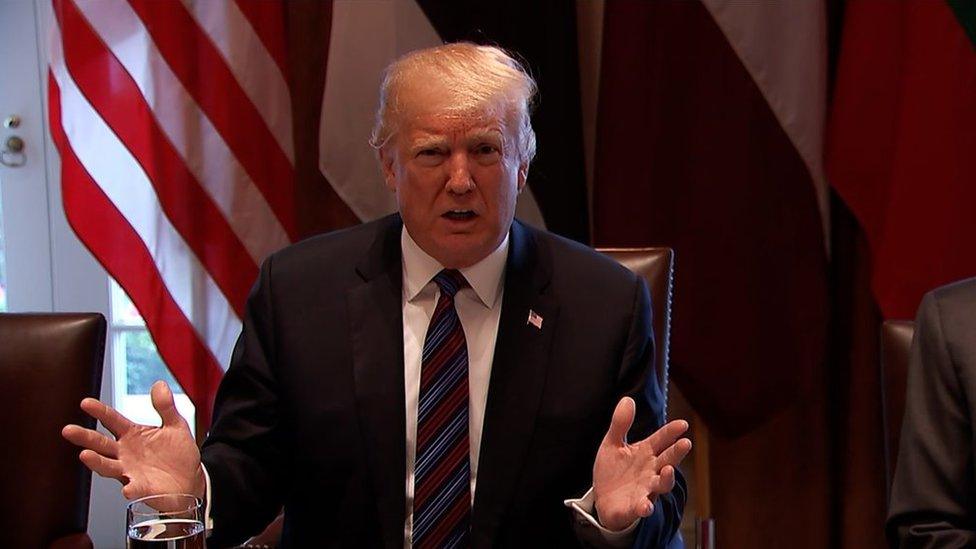
- Published15 January 2018
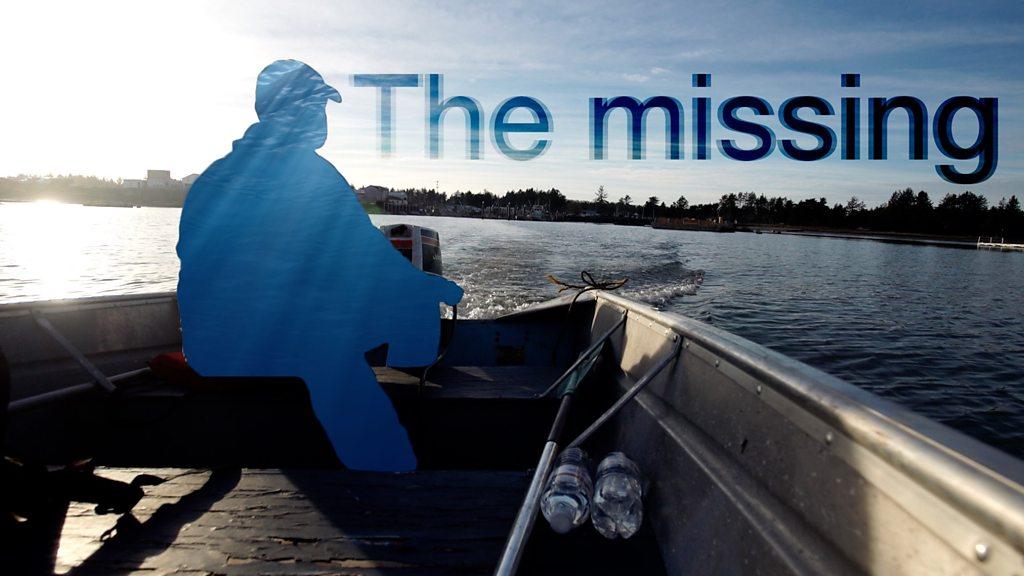
- Published13 March 2018
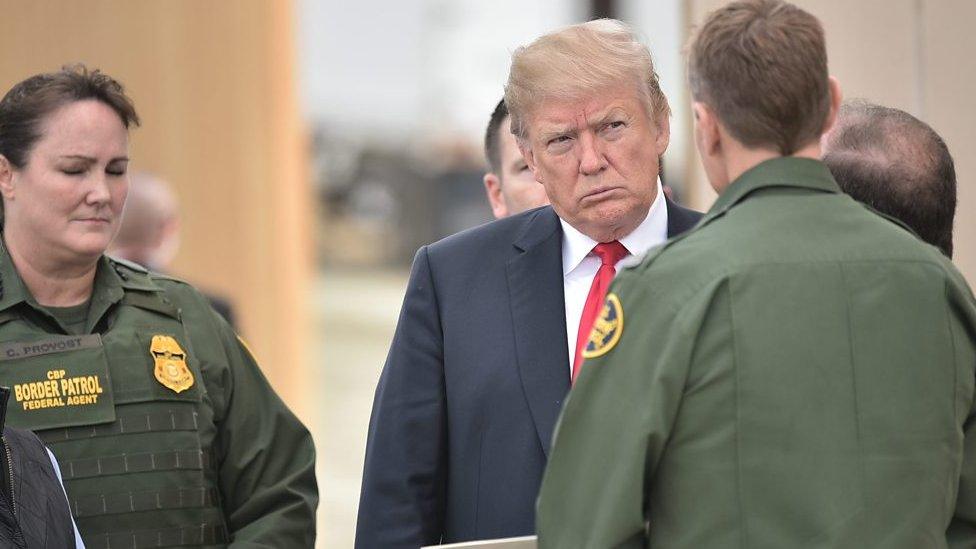
- Published25 January 2018
